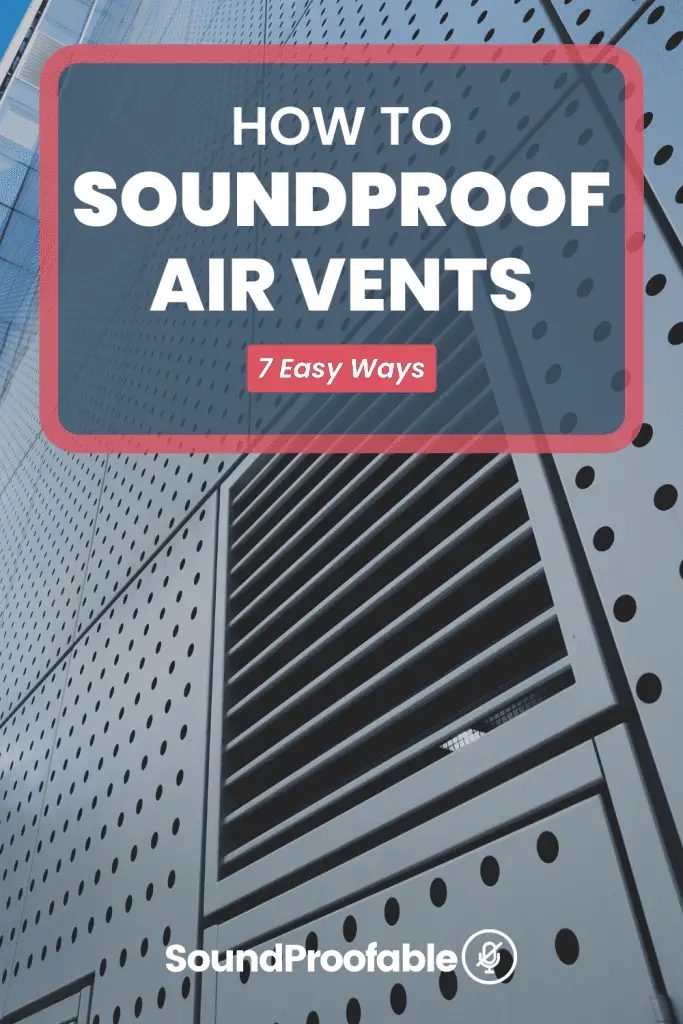In this article, you are going to learn the best way to soundproof an air vent using the easy to follow step by step guide.
One of the most common mistakes I see a lot of people make when soundproofing a house or an office is to ignore or forget about the Air Vents completely.
This can lead to severe unwanted noise coming through the ventilator. No matter how good you soundproof your room if the air vent is not soundproofed, The noise and sound waves will exploit it and all the work done will go to waste.
Now that you understand the importance of soundproofing your Air vents, It is vital to know that there are two options to go about achieving that.
- You can completely block your Air vent Covers.
- Alternatively, you can opt for creating something named the Sound Maze.
Don’t worry both methods work although completely blocking your air vent might have a more significant noise-reducing impact than sound maze method, however, Both ways will efficiently help you to reduce all the noise and sounds that come through the air vents.
Several things may cause noisy heating air vents. Fortunately, there are many ways you can go about fixing that.
Now let’s take a look at both air vent noise reduction methods so you can decide which one is right for you.

1. Soundproofing Air Vents Using the Blocking Method.
This method is the most effective and efficient of the two because completely blocking air vents will close the Air gap that you find in the Air vent to which normally a lot of undesired noise comes through.
The only serious downside to this is during the warm season the room is highly likely to get hot. Unless you have an Air-Con or Fan to keep the room temperature down when it’s summer.
Steps to block out the air vents:
There a lot of ways to do this, but unfortunately some ways are more expensive and time-consuming, but in this guide, I choose the easiest and yet cheapest method.
- Open the Air Vents (if you don’t know how to, it is straightforward to take a screwdriver and untie the studs)
- Once the Air vent is opened, you should see a hole that needs to be covered, there are a lot of ways to go about closing the Gap hole, but I recommend using the Great Stuff Big Gap Filler Foam from Amazon for the price of a cup of coffee, you can get a soundproofing foam
- 3. Close the Air vent; This will make it look normal from the outside but completely soundproofed from the inside.
2. Creating a Sound Maze (Method 2)
To be honest, I have never built a sound maze to soundproof an air vent, but I went the extra mile for you, doing all the research and digging for you!.
Based on spending hours and hours spent on researching carefully, I conclude that A sound Maze will undoubtedly help reduce noise from the air vent and a lot of people have tried it before
The image above shows you exactly how the sound maze should look like. I know it seems very intimidating and overwhelming, but once you follow this guide, you will see how easy it is.
You will have to insert wood that is covered with soundproofing foam into the air vent then try to glue it like the image above.
Using the pattern above the sound coming will be forced to move in a zig-zag pattern that lowers the sound power as it tries to enter due to the wood covered in acoustic foam.
This method should work well with reducing all the unwanted noise, but also the place will remain cool all year round.
When using soundproof maze method, You are going to need the following:
Cotton Foam: People recommend Silverstone Dampening Acoustic Silent foam.
For soundproofing air vents you will also need:
- about 1/5″ Plywood.
- A woodcutter or saw.
- A handful of wood screws.
- A Glue designed for wood Sticking
This method may seem a bit complicated, which is normal if you are not sure about how to do something type on google and I am sure you will find a lot of results, Just like I have when I was researching.
Common Questions about Air vent Noise Reduction
1. Is it Okay to Cover Air Vents?
The simple answer is it really depends on what are you really trying to achieve by covering them if you are looking to block out external noises and sounds and you don’t care about it affecting the airflow which might make the room a bit warmer because the air is trapped then yes you can cover them.
2. Why Is My Return Vent so Loud?
There are many things that may cause your return vent to be loud including external sound waves but the most common cause of a loud return vent is when too much air is forced into a smaller inadequate area which creates a lot of pressure that leads to the vent making whistling-like sounds.
3. Why Is My Air Vents Whistling?
The whistling sound in your air vent may indicate blockage which means there might be something blocking it another cause is when too much air is forced into the air vent more than it can handle. one of the best ways to deal with this is soundproof it the right way.
Final Thoughts on a Guide to Soundproofing Air Vents:
Following this article will undoubtedly have a positive impact on lowering the sound coming through the air vents.
I honestly hope you found this guide helpful and taught you a thing or two about soundproofing air vents.
